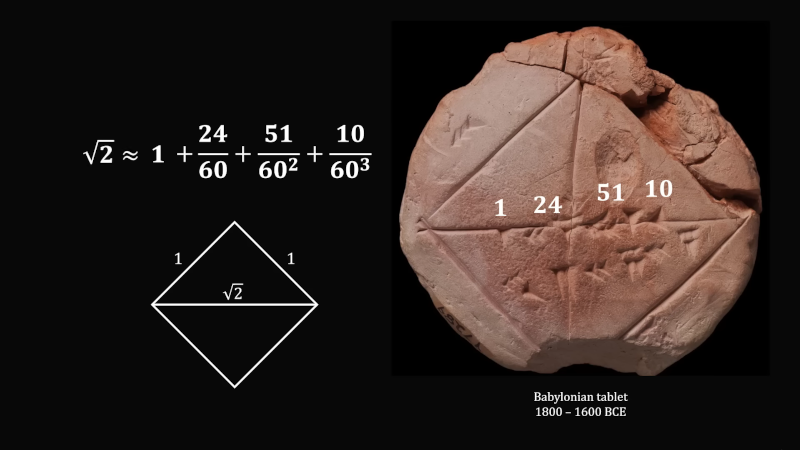Square Roots 1800s Style — No, the Other 1800s

[MindYourDecisions] presents a Babylonian tablet dating back to around 1800 BC that shows that the hypotenuse of a unit square is the square root of two or 1.41421. How did they know that? We don’t know for sure how they computed it, but experts think it is the same as the ancient Greek method written down by Hero. It is a specialized form of the Newton method. You can follow along and learn how it works in the video below.
The method is simple. You guess the answer first, then you compute the difference and use that to adjust your estimate. You keep repeating the process until the error becomes small enough for your purposes.
For example, suppose you wanted to take the square root of 85. You can observe that 9 squared is 81, so the answer is sort of 9, right? But that’s off by 4 (85-81=4). So you take that number and divide it by the current answer (9) multiplied by two. In other words, the adjustment is 4/18 or 0.2222. Putting it together, our first answer is 9.2222.
If you square that, you get about 85.05 which is not too bad, but if you wanted closer you could repeat the process using 9.2222 in place of the 9. Repeat until the error is as low as you like. Our calculator tells us the real answer is 9.2195, so that first result is not bad. A second pass gives 9.2193, You could keep going, but that’s close enough for almost any purpose.
The video shows a geographical representation, and if you are a visual thinker, that might help you. We prefer to think of it algebraically. You are essentially creating each adjustment by adding the guess and the square divided by the guess and averaging them.
The ancients loved to estimate numbers. And Hero was into a lot of different things.